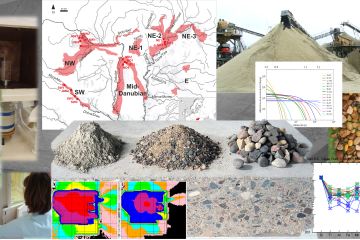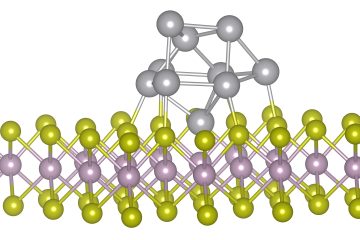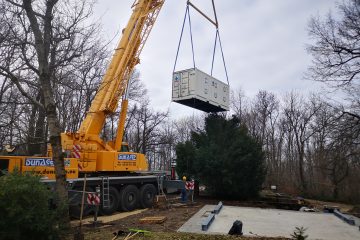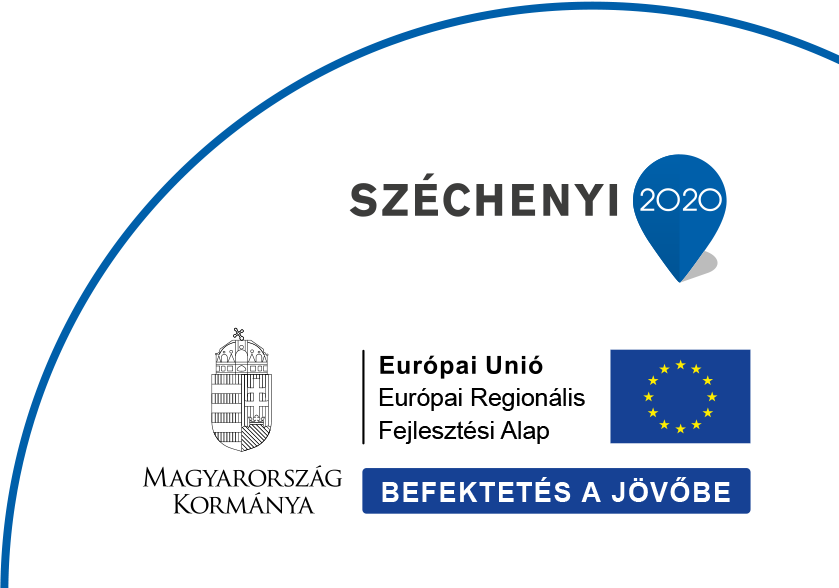Exactly 70 years ago, on September 1, 1950, the Central Physical Research Institute, KFKI, started operating, which is still one of the most significant strongholds of Hungarian scientific life.
The institute has been reorganized several times, adapted to the current circumstances and optimized for the possibilities, divided into more and fewer parts, and then reunited. Preserving the legacy of its predecessors, the researchers working at the Csillebérc site aim to carry out the highest quality scientific research to this day, an endeavor that has been marked by numerous world-class achievements over the past 70 years. Plenty of famous foreign scientists also visited the campus, and countless stories were born in the natural forest environment.
As a site, KFKI is currently the seat of the two largest Hungarian physical research institutes, under the auspices of the Eötvös Loránd Research Network (ELKH) the Centre for Energy Research and the Wigner Research Centre for Physics. These two institutions continue the high-quality work started in the former “physical researcher”, and KFKI is also home to many technology companies.
The KFKI was established by a decree of the Council of Ministers on 18 August 1950. After World War II, after the deployment of the atomic bomb, politicians also recognized the importance of physics, which was a rather neglected field at the time. According to the preparatory committee, “The aim of the KFKI is to highlight Hungarian physical research, which is far behind other disciplines, and to enable productive scientific research in all fields of physics, which are primarily important for the development and application of science.”
When the institute was established, one of the primary goals was to launch nuclear physics and materials research, but it was also important to measure radiation and its effects as accurately as possible, so the Department of Atomic Physics, Radiology and Cosmic Radiation were also part of KFKI from the start. Later, the fields of research became even more diverse, from the 1960s onwards in the fields of solid state physics, optics, particle physics, materials science, reactor physics, and later also in space research.
The Budapest Research Reactor started operating in 1959, and has played an important role in the field of radioactive isotope production and non-destructive material testing. The Soviet-built Budapest Research Reactor, originally with a capacity of 2.5 MW, was renovated in 1990 in domestic design and construction, and has since operated at 10 MW, complete with a number of modern equipment. The Budapest Neutron Centre (BNC), established for the scientific utilization of the reactor, is still the most significant domestic research infrastructure operating in an international user system. The neutron-spin-echo principle and method invented by Ferenc Mezei in 1972 which became a widely used spectroscopic method worldwide. The discovery was evaluated by György Marx as the most significant result of 20th century Hungarian experimental physics.
Built in 1968, the first TPA computer mimicked Western DEC products, but in several ways was a more advanced version of them. “It was such a success that the profit from the machines sold at that time covered 20 percent of the total Hungarian scientific budget,” said József Gyulai, former director of the Institute of Technical Physics and Materials Science. By the end of 1990, 1,490 TPA computers had been built.
In 1971, in exchange for two TPA computers, an implant device used to perform one of the most important procedures in IC technology was put into operation at KFKI.
The measurement automation system of the T-15 tokamak experimental equipment of the Kurchatov Institute in Moscow was the largest and most complex computer enterprise of the KFKI Institute for Measurement and Computer Science. The prototype of the project was the measuring system of the MT-1 tokamaks, also installed in Csillebérc.
Together with the preparatory work, the implementation took ten years. The size of the system is characterized by the fact that 14 TPA-1148 computers, 51 microprocessor machines and 1479 CAMAC modules were connected via its own local network. Its value was nearly 18 million rubles, which was more than five hundred million forints at the then (1986) exchange rate. The complexity of the networked application of nearly 70 computers did not lag behind the JET (Joint European Torus) computer system of Western European fusion research.
Károly Simonyi already discussed the issues of the practical implementation of fusion energy production in 1959, but the physical experiments did not begin until the 1970s. The aim of these was to better understand the phenomenon of nuclear fusion and thus facilitate the realization of energy-producing fusion power plants. Based on the experience gained on the only domestic tokamak experimental device, MT-1, the Hungarian fusion community gained considerable knowledge and experience in measuring plasma properties, one of the great results of which was the launch of the world’s largest stellarator in 2015 and the world could see it through Hungarian-developed cameras.
Developed in 1978, the Pille dosimeter was the first on-board radiation meter to be used by Bertalan Farkas during his spaceflight. In 1984, Sally Ride, the first American woman astronaut, also successfully used the equipment on board the Challenger spacecraft, it was the first Hungarian device used on an American spaceship. The Pille is still used on the International Space Station to this day.
At the beginning of the eighties, one of the largest Hungarian space physics project to date was launched, participating in the Venus-Halley (VEGA) program, during which the launched space probe approached a comet moving at high speed. During the peak period, about 400 people worked on the program at KFKI under the leadership of Ferenc Szabó and Károly Szegő. In March 1986, the two VEGA probes approached the comet approximately 8,000 km away. One third of the probes’ instruments are made in Hungary, a significant part of them in KFKI. The camera system, designed and built at the Research Institute for Particle and Nuclear Physics, not only transmitted images of the comet for the first time in history, but also searched and continuously tracked the comet’s bright core and directed the probes’ instruments. This was the first time in the history of space exploration that autonomous control was performed based on real-time image processing. The other, even more scientifically effective instrument was the Plasma Diagnostics, designed at the Atomic Energy Research Institute, which for the first time in the world measured the composition, energy spectrum, and interaction of solar gas with solar wind.
Researchers at the Centre for Energy Research and the Wigner Research Centre for Physics also played a significant role in the Rosetta mission, which began in 2004. This was the first mission where a spacecraft landed on a comet.
KFKI researchers also played a significant role in Hungary’s accession to the European Organization for Nuclear Research (CERN) in 1992. Hungarian researchers were first able to work at the Joint Nuclear Research Institute in Dubna, Russia, and then, thanks to an agreement, they had the opportunity to continue their work at CERN in Geneva. From here, a straight path led to Hungary becoming a full member of CERN, after which Hungarian researchers contributed to a number of world-class results, including the discovery of Higgs boson and quark-gluon plasma. As a result of the cooperation with CERN, the Wigner Data Center was established in 2012, which still provides high-quality IT services for scientific research.
Nowadays, a group of gravity colleagues study the gravitational waves in the framework of the LIGO / VIRGO cooperation, routinely analysing the events detected every six months.
Many world-renowned scientists also visited the site. One of the most interesting personalities was Stephen Hawking, but Roger Penrose, for example, also attended, both of whom attended relativity workshops. In addition to science, KFKI has always had a vibrant social and cultural life. There was an example of that the New Year’s Eve cabaret of the Hungarian Radio was also recorded here.
The Centre for Energy Research and the Wigner Research Centre for Physics commemorate the 70th anniversary of KFKI with more interesting photos during the week on their Facebook pages.
Press contact:
Centre for Energy Research:
Tamás Szabolics, szabolics.tamas@energia.mta.hu, +36 30 388 6770
Wigner Research Centre for Physics:
Dovicsin-Péntek Csilla, pentek.csilla@wigner.hu, +36 30 487 9869
Sources:
• László Jéki’s book KFKI
• László Jéki: Special issue of the Central Physical Research Institute – Természet Világa, 24.01.2006.



